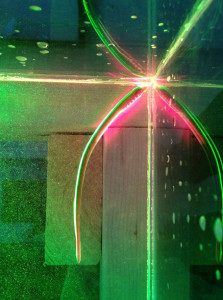
Stanford engineering professor John Dabiri collaborated with scientists from across the country to shed light on the counterintuitive way aquatic creatures move. These new insights provide the foundations for bio-inspired underwater vehicles and methods for studying aquatic animal movement.
When humans move through water, we create high pressure zones and push off the water. However, Dabiri and his colleagues discovered that the aquatic animals they studied, jellyfish and lamprey, instead create low pressure zones to pull themselves through the water. According to Dabiri, these findings, contrary to the presumption that these animals would use methods of propulsion similar to humans, surprised even the researchers.
“We just assumed it was something wrong with our measurement technique or our calculations,” Dabiri said, referencing the first time they saw the low pressure zones.
At the start of the experiment, Dabiri and his colleagues at the Marine Biological Laboratory ran into the problem of not being able to measure the pressures generated by the swimming animals.
“If I wanted to figure out your walking gait, for example, I might have you walk on a special plate that would measure the forces that you’re exerting on the ground,” Dabiri said. “We haven’t had the equivalent for a swimming or flying animal.”
To solve this, they used a technique called particle image velocimetry, which consists of putting glass beads coated with silver into the water tank and shining a laser through the tank. The silver reflects light from the laser, and by looking at how the beads move, scientists can then determine pressures at work pushing the beads in that way.
Particle image velocimetry has been used to study conventional engineering systems like airflow over a plane wing or water flow through pipes, said Dabiri, but the method has not previously been applied to the interactions of animals with their environments.
Dabiri plans to adapt this technique even further, creating a system small enough that a scuba diver could take the measurement tool on a dive. He explained that this will better our understanding of animal movement, since animals tend to move differently in the confined space of a laboratory than they do in the wild.
Dabiri also hopes to use his research to improve the design of underwater vehicles and maximize fuel efficiency. He suggests looking at jellyfish, lamprey and other aquatic animals in order to mimic how they use lower pressures to pull themselves through the water.
Dabiri joined Stanford’s faculty this past July and has high hopes for the University’s progress in his field.
“I’m hoping — both in terms of the faculty interactions and the students — that we’ll continue to expand the envelope in terms of applying a physical approach to understanding biological systems,” Dabiri said. “It’s mainly been aquatic animals, but there’s other faculty thinking about bird flight or plant systems and others, and I think this whole umbrella area has an exciting future at Stanford.”
Contact Aulden Foltz at afoltz ‘at’ stanford.edu.
